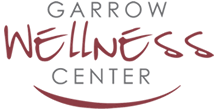 Muscle knots are bump-like areas of the muscle that occur when the fascia or muscle fibers tense and tighten. They are also referred to as trigger points and can be classified either as active or latent. Active trigger points are always painful even without touching while latent trigger points become painful when you press on them. You can use home remedies as the first line of treatment for muscle knots before seeking help from a medical professional. This article looks at some of the ways to get rid of muscle knots from home.
Muscle knots are bump-like areas of the muscle that occur when the fascia or muscle fibers tense and tighten. They are also referred to as trigger points and can be classified either as active or latent. Active trigger points are always painful even without touching while latent trigger points become painful when you press on them. You can use home remedies as the first line of treatment for muscle knots before seeking help from a medical professional. This article looks at some of the ways to get rid of muscle knots from home.
- Hot and Cold Therapy
A combination of cold compress and a heating pad can help relieve pain and inflammation caused by muscle knots. Use a cold compress for about 10 minutes with a 15-minute break between the applications. You need to repeat this procedure until you start feeling some relief. Applying a cold compress reduces swelling of the muscle knot by constricting your blood vessels. You can also apply heat by taking a warm bath or using a heating pad.
The use of heat on a muscle knot increases blood flow and supply of essential nutrients to the affected area to promote healing. It relaxes and loosens stiff muscles, which in turn relieves you from pain. You can either alternate between hot and cold therapy or choose one that works best for you.
- Make Stretching a Habit
Gentle stretching can aid to wellbeing and recovery if it is performed using the right techniques. It elongates stiff muscles that help to ease tension in your body. It is important to be gentle with yourself when stretching to prevent your situation from getting worse. Avoid putting yourself in positions that cause more pain as you need to be as gentle as possible to achieve the best results. To reduce the risk of injury, hold your stretches for at least 30 seconds and then release slowly to your normal position. You can hold onto something for balance to reduce the risk of falling.
- Self-Massage Using Muscle Rubs
A formula that contains menthol, camphor, or capsaicin can help soften and relax muscle knots. Massage the muscle rub around the muscle knot at least twice a day to achieve a cooling relief. It is important to start with a patch test if you are using the muscle rub for the first time to determine whether it reacts with your skin. Apply a small amount of the cream or ointment on your forearm and leave it for 24 hours to be sure there is no reaction. If everything seems okay, then you can apply the muscle rub to other parts of your body where you feel the muscle knots. You can always ask someone to help you if you are having trouble applying the muscle rub to areas that are difficult to reach.
- Regular Exercises
Aerobic exercise is one of the best physical exercises that can help with muscle knots. Swimming, jumping jacks and other arm movements that focus on the muscles around the affected area can help relieve muscle knots and reduce inflammation. Performing regular exercises increases blood flow to the affected area, which helps to filter out toxins and reduce inflammation. Increase blood circulation promotes the supply of essential nutrients to the affected area, which accelerates healing. The most beneficial exercises for muscle knots may vary depending on the part of the body that is affected. It is important to discuss specific exercises and any health concerns with a fitness or health professional before attempting any new workout routine.
- Get Enough Rest
Muscle knots are often caused by too much stress to the muscle fibers. It is important to take a break from activities that cause pain or tension to your muscles. You can also switch up your workout routine if it could be the primary cause of the problem. Resting provides enough time for your muscles to heal and can be efficient if accompanied by other treatments like stretching or self-massage. You can massage a muscle rub onto the affected area before sleep to promote faster healing.
Muscle knots should go away after a few sessions of self-treatment at home. However, you can only enjoy greater mobility and pain relief by staying active and avoiding activities that exert a lot of stress to your muscles. If you have tried several home remedies but you have not noticed any results, it is important to seek medical help from your doctor to diagnose your condition and provide necessary treatment to help with your muscle knots.

